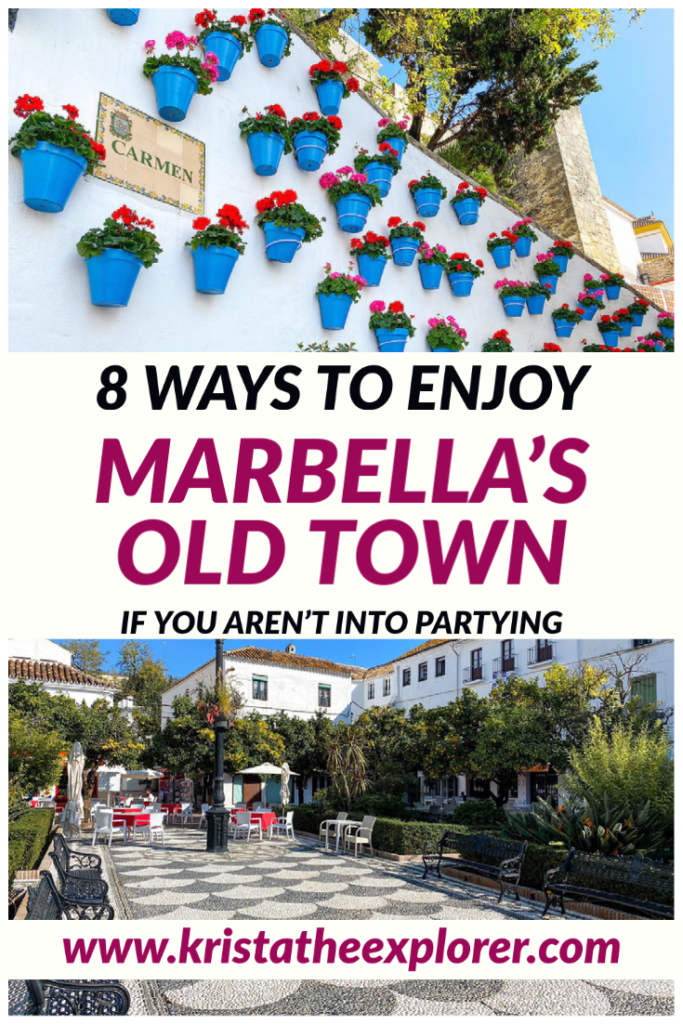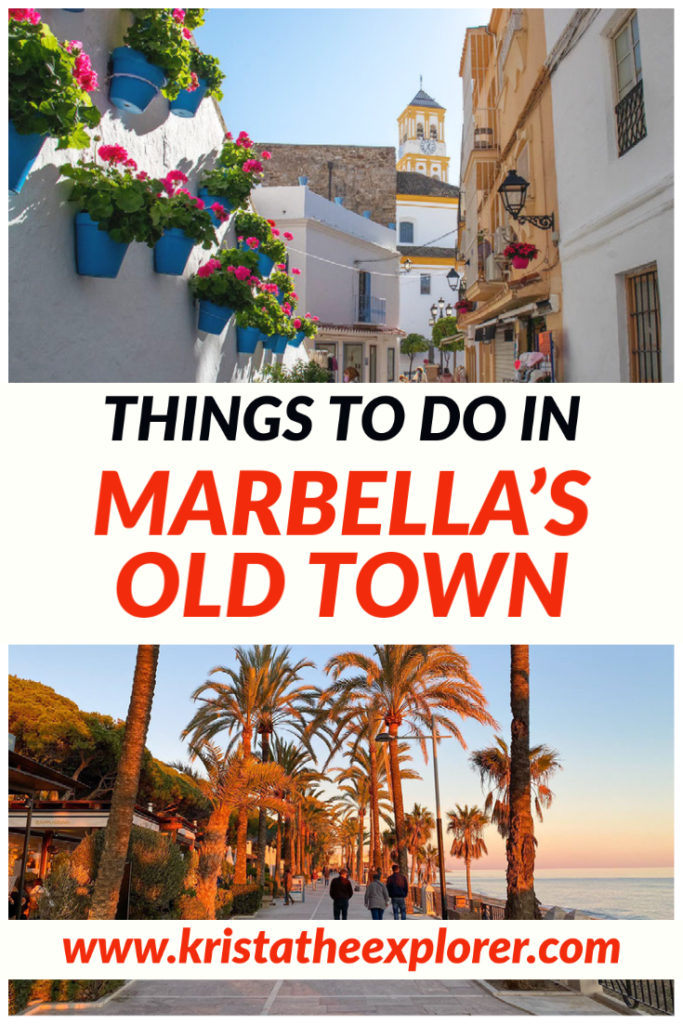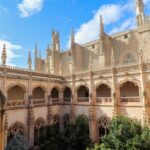Marbella is one of the most well known spots along the Costa del Sol, sitting between Malaga and Gibraltar. It’s famous for being the playground of the rich and wealthy. Many celebrities, and even royalty, like to spend part of their year here, tucked away in their villas or on their yachts basking in the Andalusian sun and eating at one of the many Michelin star restaurants in Marbella. Alternatively, Marbella is also very popular for its elegant nightclubs and party scene. What a lot of people don’t realize however, is that this coastal haven is steeped in history. Marbella’s old town is just as beautiful as the city’s beaches and waterfront area.
The history of Marbella dates back over 2500 years, and the city was once an important Roman settlement. As you walk through the streets of Marbella’s old town, you can also see the remains of a 10th century fortress which was built during the period of Islamic rule.
To catch a glimpse of the more modern aspects of Marbella, you only need to take a short drive along the coast to Puerto Banus. This is where you’ll find hundreds of boats and massive yachts docked, flashy cars, designer shops, and celebrities walking around. There are enough things to do in Marbella for everyone, so if you’re thinking of visiting the southern coast of Spain, or are planning a road trip in Andalusia, remember to add it to your itinerary. It’s one of the best places to visit near Malaga! Here are my top things to do in Marbella’s old town.
- Things to do in Marbella's old town
- Where to eat in Marbella's old town
- Where to stay in Marbella
- Is Marbella's old town worth visiting?
Things to do in Marbella’s old town
Relax in Plaza de los Naranjos
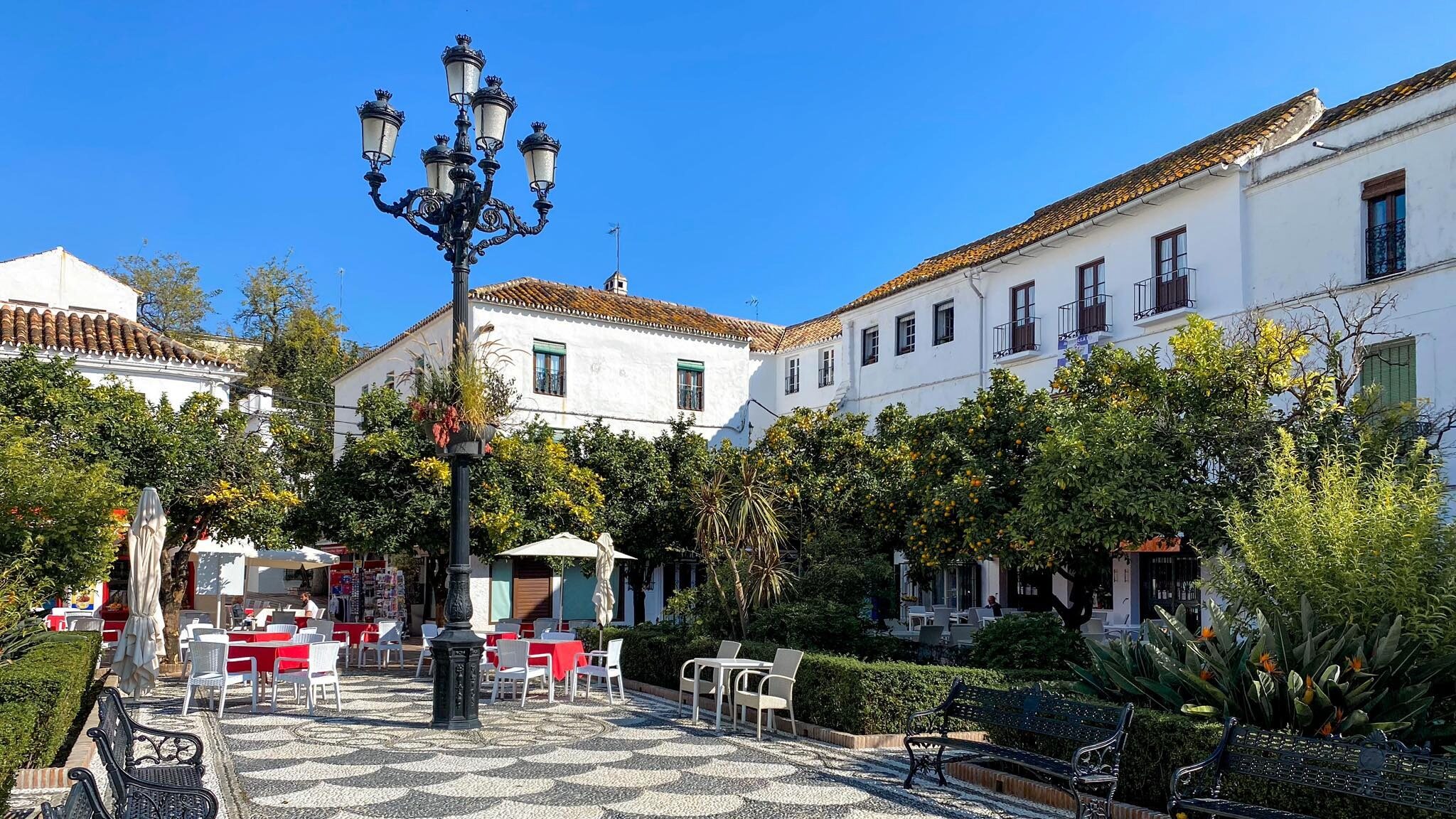
In terms of Marbella’s tourist attractions, they don’t come much prettier than Plaza de los Naranjos (Orange Square). This is one of the busier areas in Marbella’s old town, and is usually filled with tables of people eating tapas and enjoying a drink or two under the much needed shade of an umbrella.
The plaza dates back to 1485, when the Catholic monarchs took the city from the Moors. The buildings around the perimeter of the plaza were built in the Catalan style but the orange trees weren’t planted until 1941. Parking in Marbella’s old town can be tricky, so if you’re planning a day trip to Marbella I would recommend parking at an underground parking lot.
Take a look at Casa Consistorial de Marbella
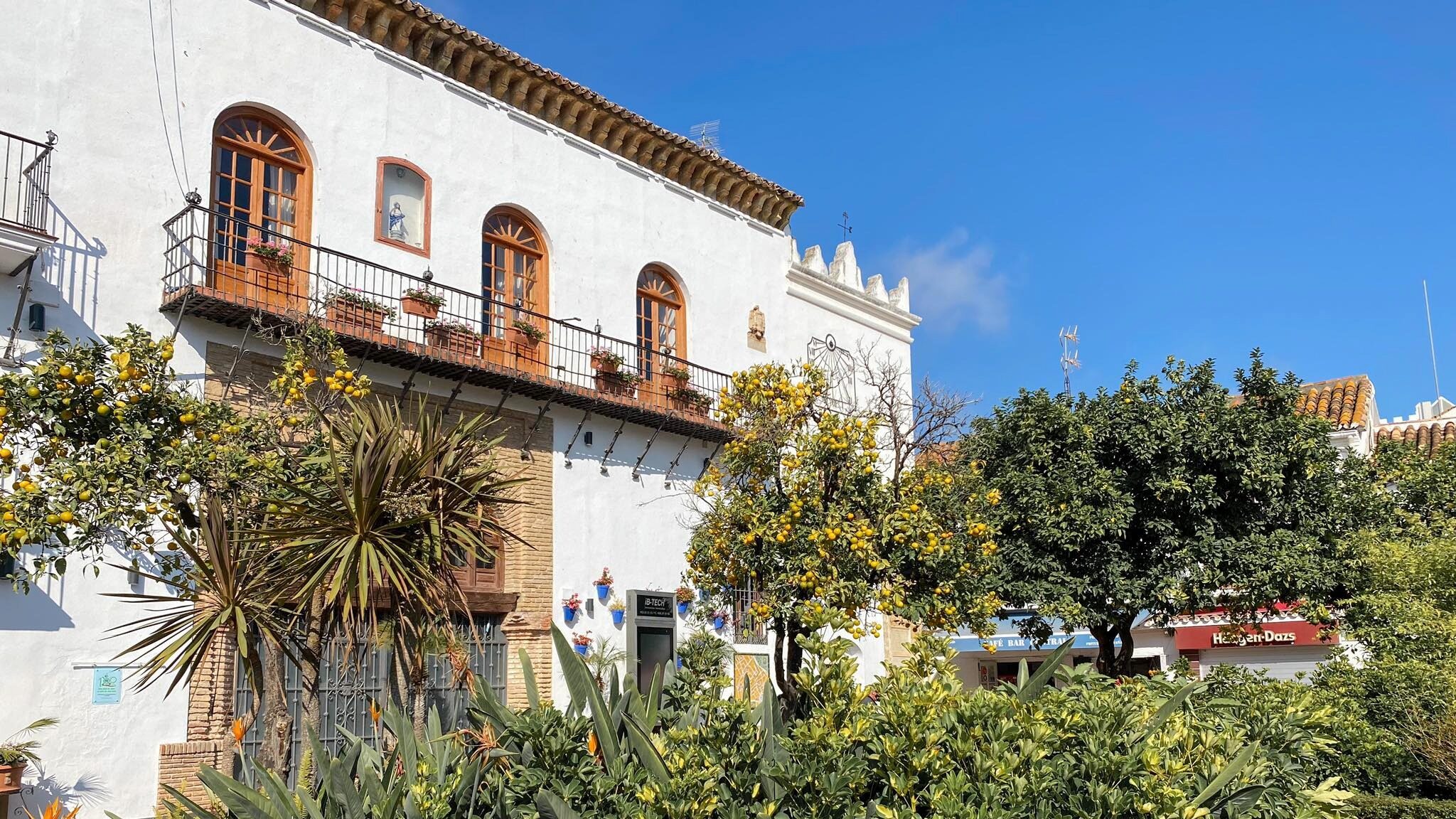
One of the main buildings surrounding Plaza de los Naranjos is Casa Consistorial de Marbella. This Renaissance building was constructed in the 16th century, and is now home to the city’s town hall. There’s a memorial plaque on the outside of the building written in Old Spanish to commemorate the date that the Catholic monarchs conquered the city. The tourism office is located on the corner of this row of buildings as well. This Marbella attraction is often overlooked or completely missed by people visiting the plaza.
Explore the streets
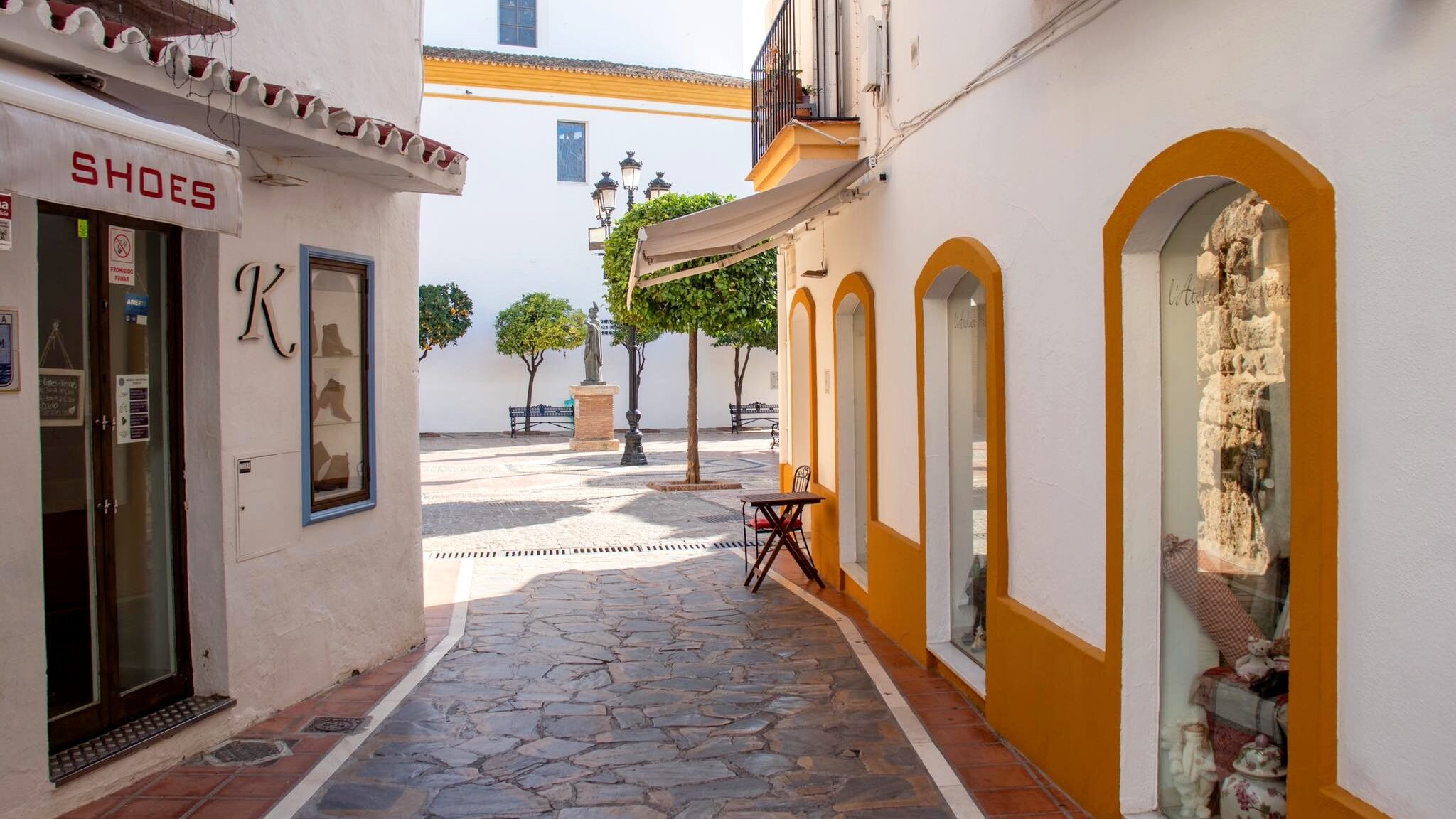
What I love the most about Marbella’s old town is the narrow streets lined with boutique shops and traditional restaurants. You could easily spend all day casually walking through the old town and not get bored of it. The streets often opened up into charming small plazas too. Of course, shopping in Marbella’s old town is an absolute must, even if it’s just window shopping.
Take a photo at Calle Carmen

Just around the corner from Plaza de los Naranjos is one of the most photographed streets in Marbella’s old town – Calle Carmen. If you’ve been to any pueblos blancos (white villages) in southern Spain or have seen photos of them, you’ll have noticed that many have blue painted flower pots sitting on their whitewashed walls. Marbella is no exception. Since this is a very popular street, in the busier months it can take a while to get one without anyone standing in the background – so be patient.
Search for the medieval town walls

Behind the blue plant pots at Calle Carmen you’ll find a long set of steps to walk up which run along what used to be the city walls. They were built in the 10th century when the city was under Moorish rule, and are still well preserved even though very little of the walls and towers still remain. You can still catch glimpses of the 10th century fortification popping up through the old town. You’ll notice that this part of Marbella still has the feeling of being enclosed, despite the fact that the city has long grown out of its walled fortress.
Stop in for a visit at Iglesia Mayor De La Encarnacion
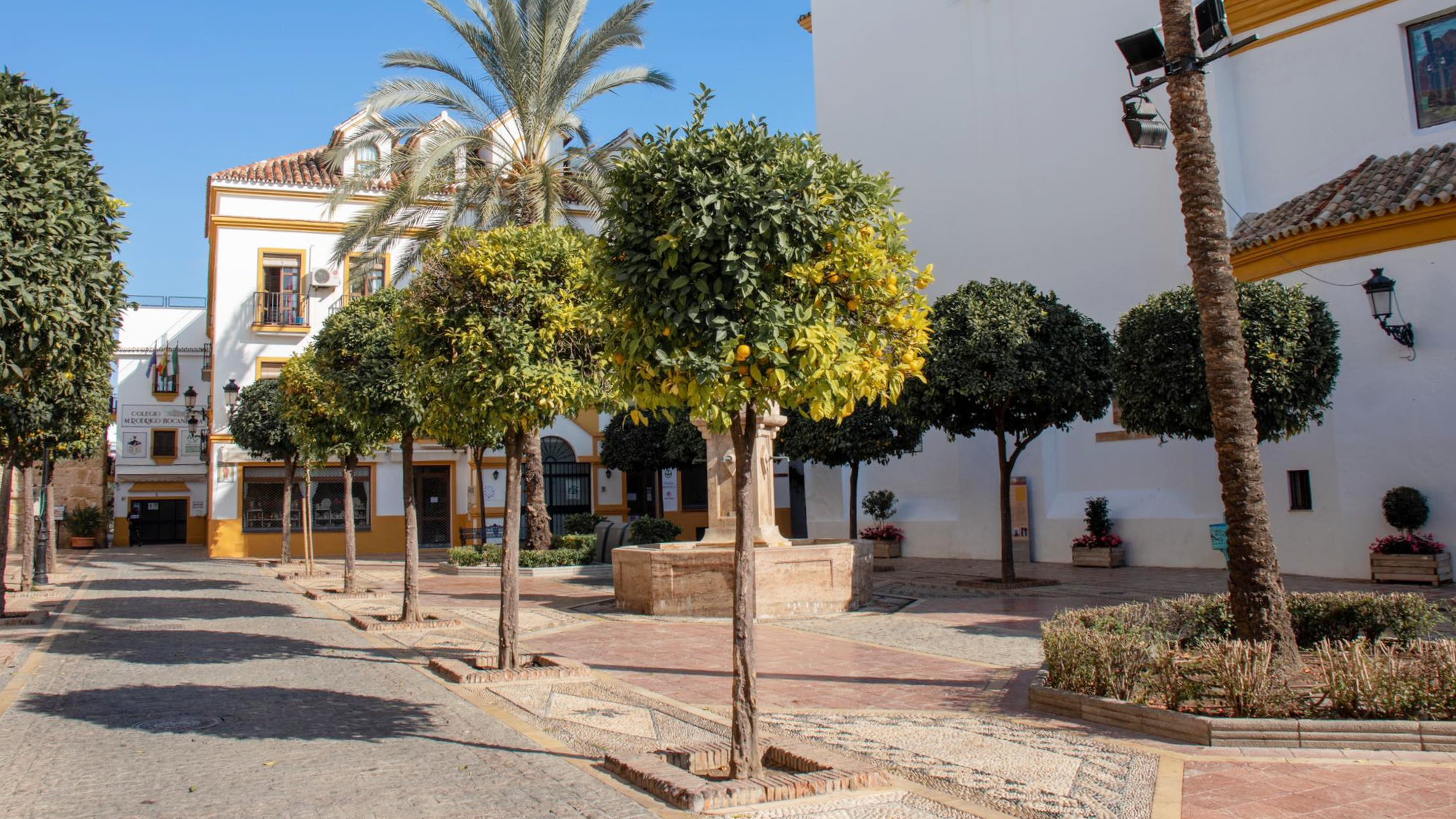
At one end of Calle Carmen sits one of the main attractions in Marbella’s old town – Iglesia Mayor De La Encarnacion. The construction of this church began in the 17th century, but following the Spanish Civil War it had to be rebuilt. It faces part of the 10th century city wall, and overlooks a very well maintained plaza that’s lined with orange trees. If you happen to visit the church when its doors are open, you’re more than welcome to enter for free and walk around.
Take a stroll along Paseo Maritimo
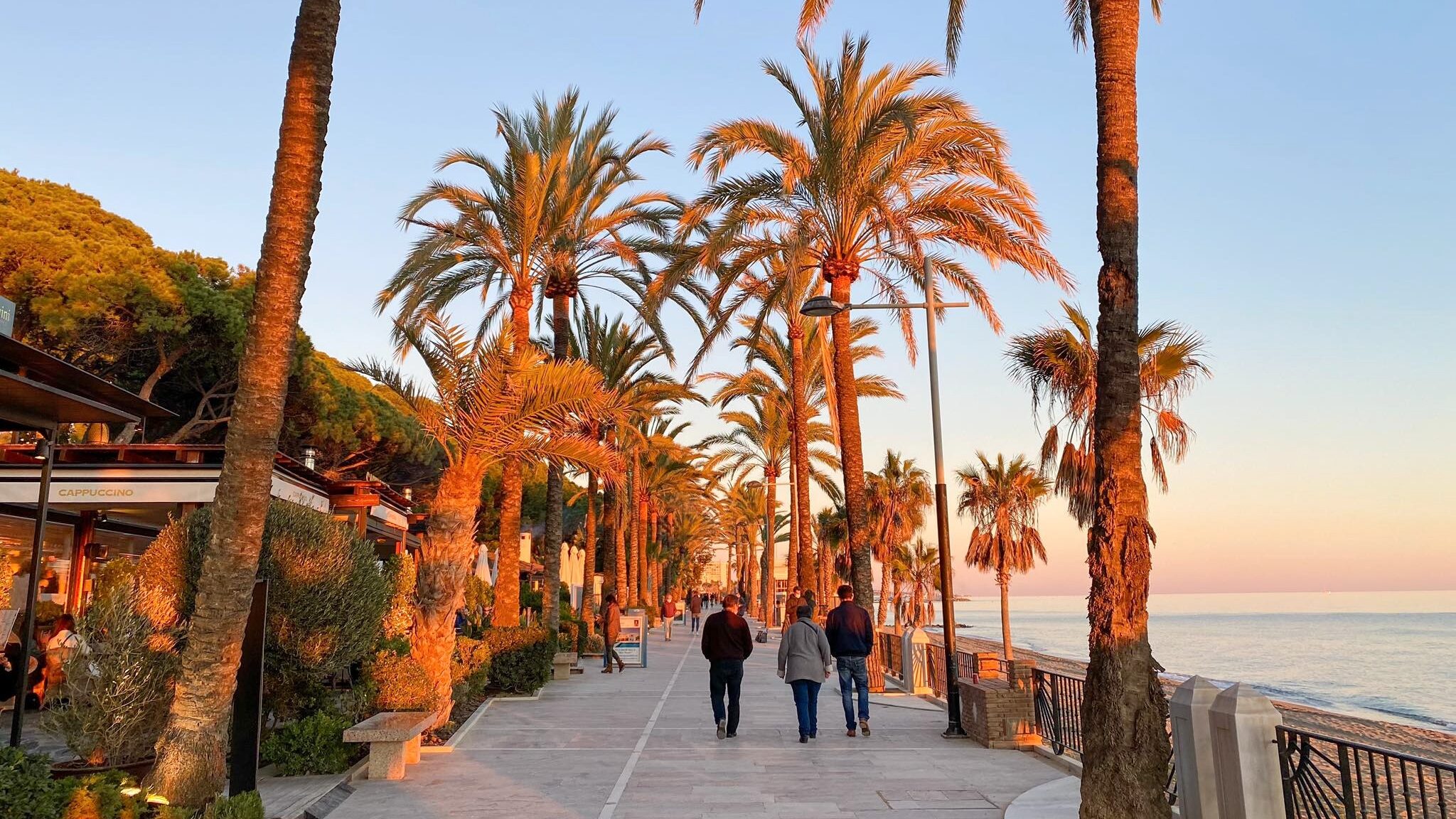
Although not in Marbella’s old town itself, you can’t visit Marbella without taking a stroll along the seafront. It takes less than 10 minutes to get from Plaza de los Naranjos to Paseo Maritimo, which is a very long promenade that stretches all the way to Puerto Banus. In fact, many people like to walk the entire length of this 7.6km promenade simply for the gorgeous sea views.
Along the promenade you can find lots of bars, restaurants, and shops, and you’ll also pass by a number of popular beaches in Marbella, which you can access easily from the path. I would recommend passing through Avenida del Mar on your way from the old town to the promenade, which is a large open plaza lined with palm trees and sculptures by Salvador Dali.
Admire the sunset

If you time your visit to Paseo Maritimo right, you’ll be able to take in a gorgeous Spanish sunset while looking out over one of the many beaches. A personal favourite view of mine is from the section of the promenade next to Playa de la Fontanilla. It seems to be a little less busy than other beaches, with a few palm trees sticking out of the middle of it which makes for the perfect photo. If you’re visiting Marbella in the off-season, make sure you bring a jacket because it gets a lot cooler than you would expect in the evening.
Where to eat in Marbella’s old town
The Farm Restaurant
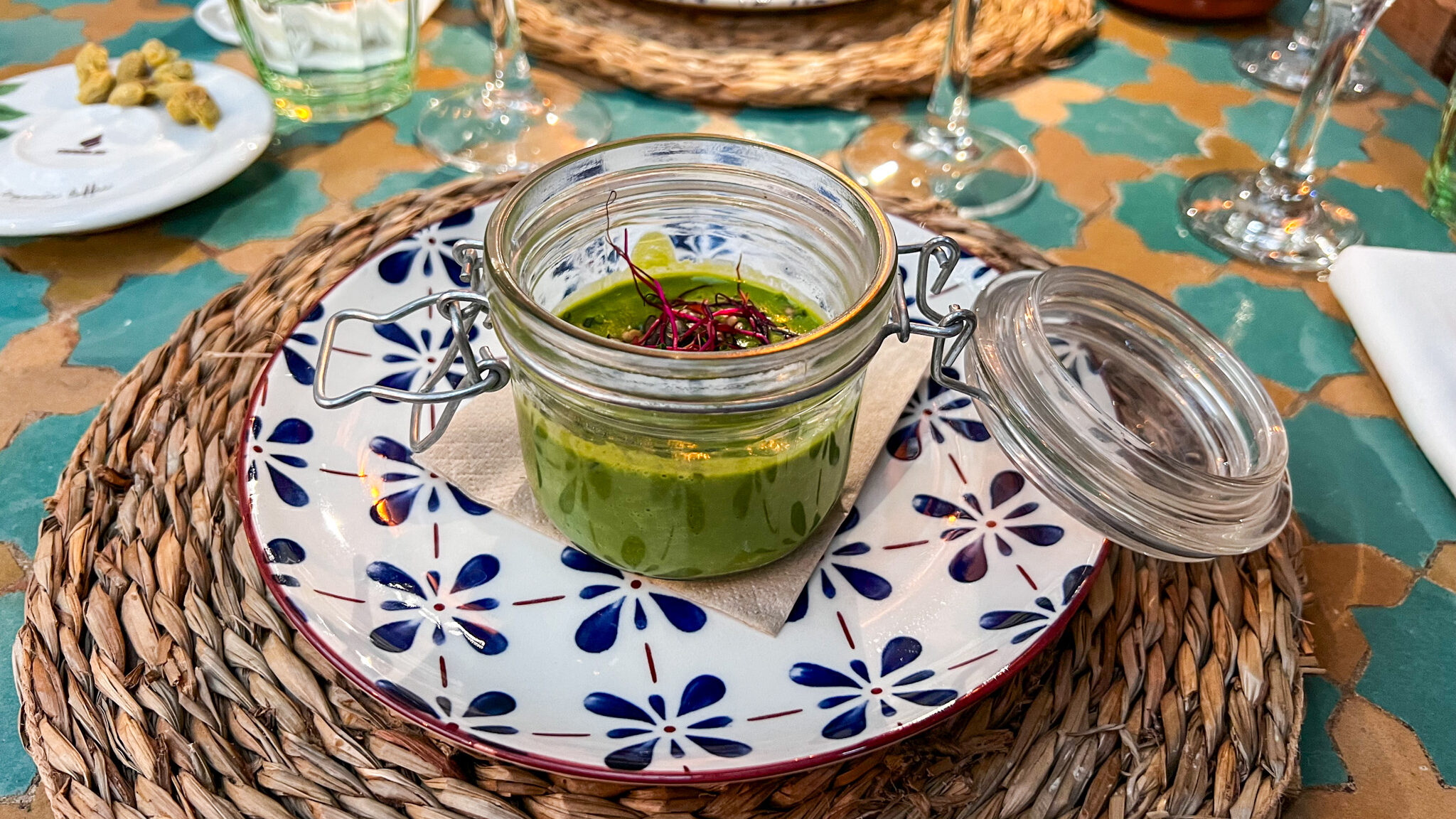
The Farm Restaurant is a beautiful restaurant in Marbella’s old town with a focus on fresh and organic food. They take a kilometre zero approach to their menu, meaning everything is locally sourced and bursting with flavour. They’re open throughout the day so you can get your slow food fix whenever you want. If you can’t decide which dishes to order, I would highly recommend trying their six course tasting menu. You can add a wine pairing for an additional cost as well. We thoroughly enjoyed our dining experience and all of the food was phenomenal.

The tasting menu may be different when you visit, so I’ll give you an idea of what to expect. We started off with two vegetarian dishes which were beautifully presented, and this was followed by scallops in cream and spinach. The first main dish was seabass and later came lamb chops served with potatoes and salad. To round things off we tucked into a brownie with pecan and ice cream. Each course came with a wine pairing which expertly complimented the dish. The Farm Restaurant is a must-try if you’re spending some time in the old town.
La Casa del Te
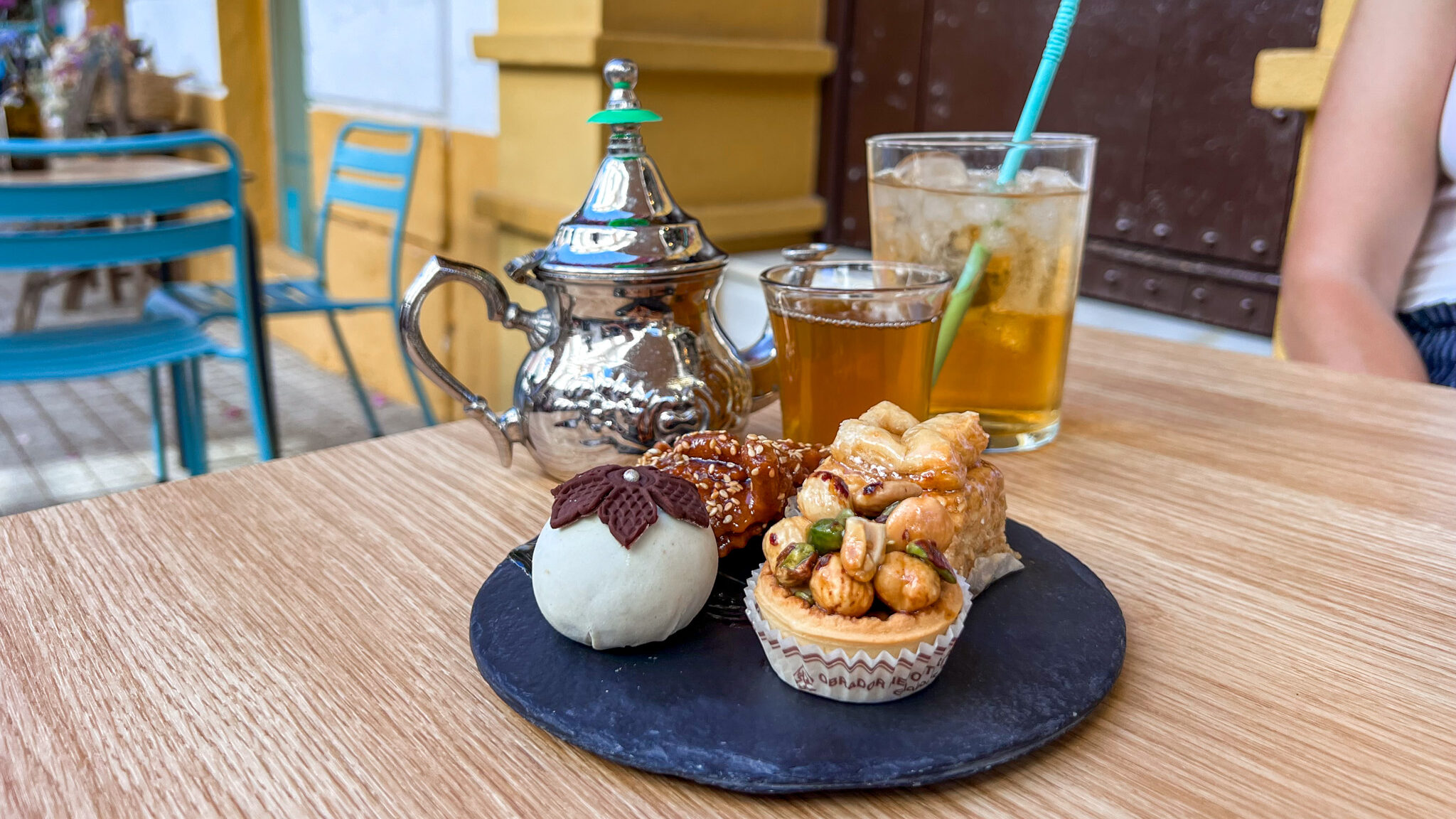
One of the most unique places to eat and drink in Marbella’s old town is La Casa del Te. This tea shop sits in the heart of the old town and is known for its unique selection of exotic teas from around the world. They also have a good selection of other drinks such as cocktails and fresh smoothies, so it’s a nice place to visit in the summer months. I would recommend ordering a selection of their Moroccan desserts to pair with your drink because they’re quite light and not very sweet. Don’t miss this unique spot in Marbella’s old town during your trip!
Where to stay in Marbella
Hotel Lima
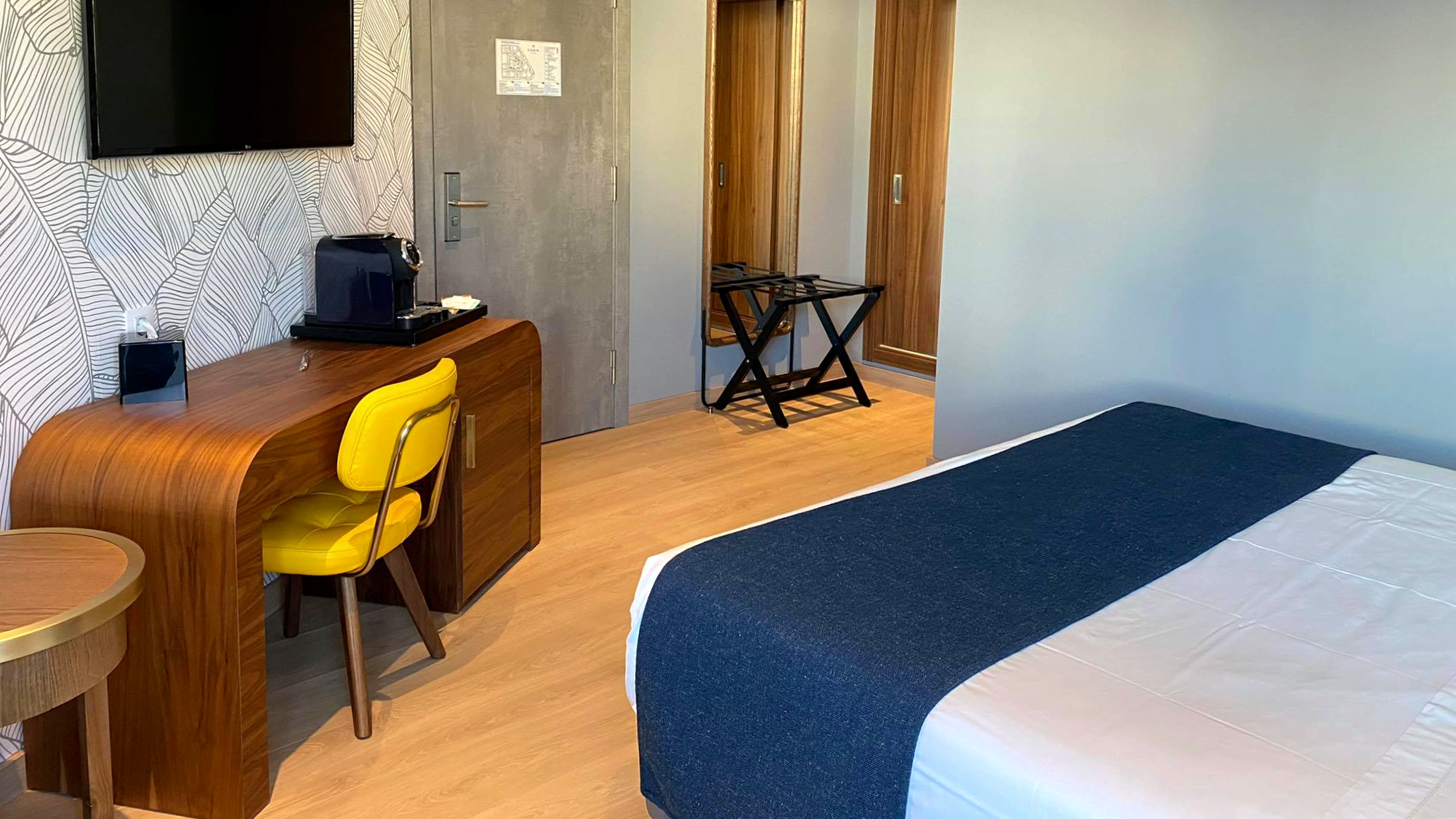
Since Marbella is a very popular seaside destination in southern Spain, there are too many hotels to count. Luckily, I’ve done all of the hard work for you! Hotel Lima is an adult-friendly (no children) 4 star hotel located less than a 5 minute walk to the promenade, and less than a 10 minute walk to Marbella’s old town. There is also an underground parking lot right next to the hotel which you can use for the duration of your stay for a daily fee.
The modern design of this hotel is perfect, and their rooms are very spacious, with all of the amenities you could need – including speakers for the smart TV built into your headboard. In the warmer months you can treat yourself to a drink or two on their rooftop bar (Virazon Restaurante), and indulge in their breakfast year round on the main floor of the hotel. And if you don’t fancy a dip in the sea, you can swim in their rooftop pool instead.
>> See what rooms are available at Hotel Lima <<
Is Marbella’s old town worth visiting?
Dare I call Marbella a hidden gem in southern Spain? It’s definitely very well known along the Costa del Sol, but Marbella’s old town is perhaps less visited by people heading to the coast. The next time you find yourself in the province of Malaga, make sure you add this beautiful old town to your itinerary. It’s only a short drive from some fantastic white villages too, like Gaucin and Casares.
Did you know that you can book an airport transfer from home and pay nothing upfront? A taxi driver will be waiting for you at the airport to drive you to your destination and you don’t need to pay anything until you arrive safely. Solhop offers airport transfers in different cities around Spain, including Malaga and Marbella.
If you’re planning a trip to southern Spain or have been to Marbella in the past, I would love to hear from you in the comments below. And as always, don’t forget to follow me on my travels through Instagram as well!
This post may contain affiliate links, which means I may earn a commission from the discount codes used or when a link/ad is clicked. All purchases made will come at no extra cost to you, and I only include products and services that I would personally recommend.
Pin this blog post for later!
